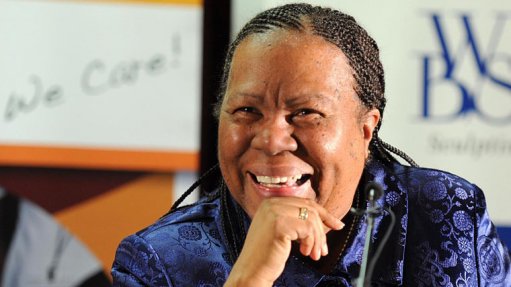
Science and Technology Minister Naledi Pandor
The Department of Science and Technology (DST) and National Treasury are cooperating to ensure that the country increases its research and development (R&D) spending over the next four years, Science and Technology Minister Naledi Pandor told journalists at her department’s Budget Vote media briefing on Thursday. “We continue to work very closely with National Treasury to map out a process for ensuring that we reach the ANC’s, and now government’s, target of gross expenditure on research and development of 1.5% of GDP [gross domestic product] by 2019,” she said.
The Department will also focus on developing international cooperation in order to obtain foreign funding. The aim is “to secure a strategic target of R380-million in foreign investments in the National System of Innovation during the year”, she affirmed.
The DST’s budget for this financial year (2015/2016) comes to R7.482-billion. Of this, 92.2%, or R6.9-billion, is assigned to agencies that report to the Minister. In turn, R2.534-billion of this R6.9-billion comes from Parliamentary grants.
These Parliamentary grants are distributed as follows: R827.7-million to the Council for Scientific and Industrial Research, R885.9-million to the National Research Foundation (NRF), R228.7-million to the Human Sciences Research Council, R385.2-million to the Technology Innovation Agency (TIA – in an aside, Pandor noted that she thought this should be increased in future), R22.991-million to the Academy of Science of South Africa and R124.4-million to the South African National Space Agency (Sansa).
“This [Sansa] is again an area in which I think we should also see a rapid upward movement [in funding],” she stated. “The remainder [of the funding] will be transferred to entities for various projects and programmes during the course of the year.”
The DST’s priorities for this financial year are: human capital development, the creation of new knowledge, investing in research and the required infrastructure, as well as stimulating innovation through financing marketable products developed through research and incubation. She pointed out that the National Development Plan had “set ambitious targets and we believe our recently completed Human Capital Development Strategy will help us meet those targets”. During this year, the DST will release funding to the NRF to support 14 880 postgraduate research students. This is being done to improve the country’s global competitiveness.
The DST’s flagship projects are (in the order given by Pandor) the MeerKAT radio telescope array, the Technology Localisation Programme, the TIA and indigenous knowledge-based innovation.